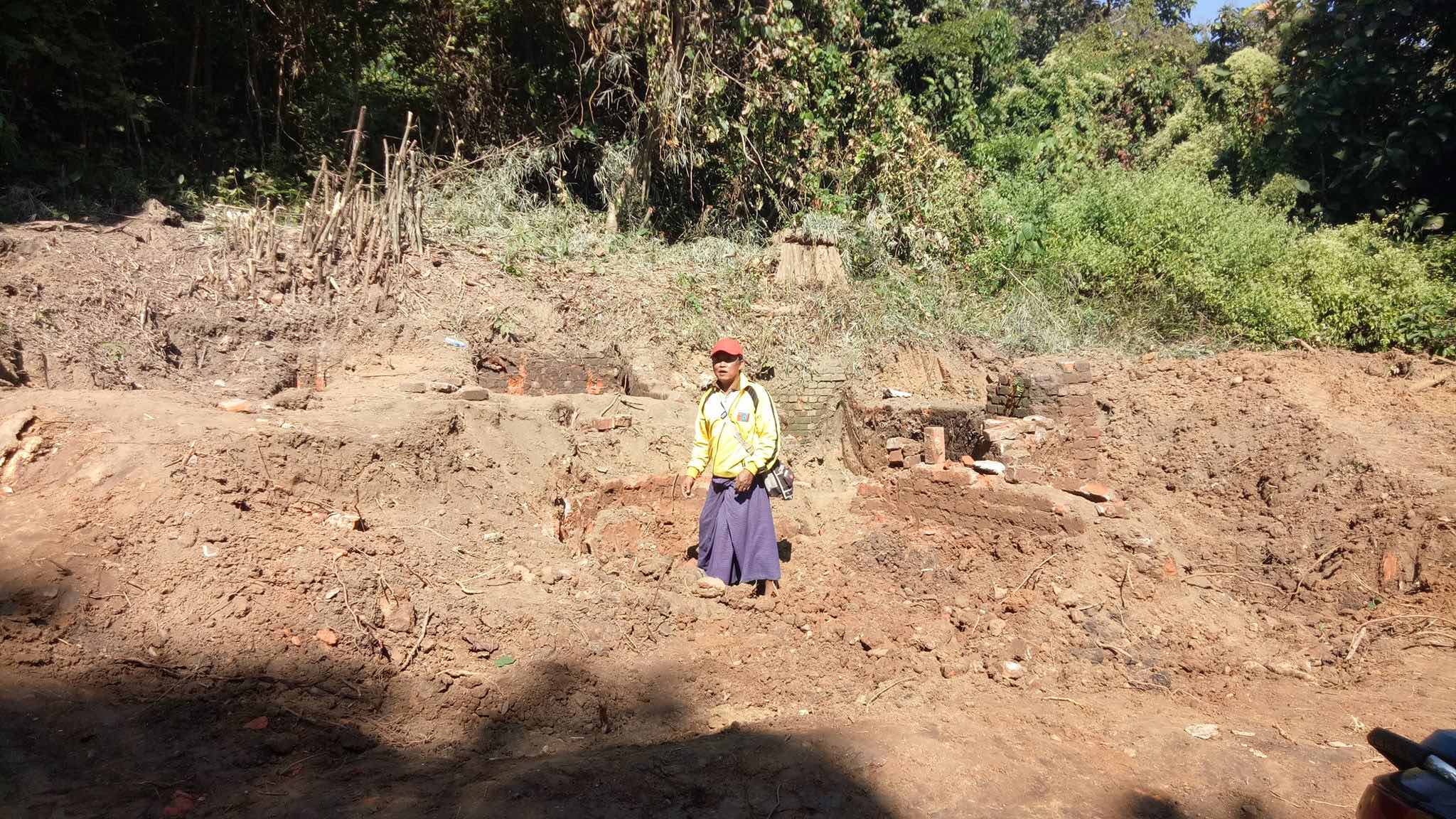A secret underground military hospital used by the Japanese during WWII has been uncovered in Sagaing State, along Myanmar’s northwest frontier with India.
News of the discovery first came to light on Nov. 26 via a series of Facebook posts by local Sagaing historian Nyo Ko Naing.
The discovery was later confirmed by U Than Win, an MP in Indaw Township, where the underground site was discovered, who told VOA Burmese on Nov. 28 that the Japanese facility had been uncovered days earlier during road construction.
The hospital, known as Gunji Byoin (军事病院), was used by the Japanese during the Battle of Imphal, a major Japanese defeat by British and Indian forces. Local historians believe the wounded were transported by plane before taken to the underground location.
The local Sagaing government had long suspected there were underground structures, Than Win told VOA.
“During World War II, the Japanese built secret underground hospitals. We knew they existed, and we were trying to uncover the area as part of our Eco Tourism initiative,” he said.
“We started paving roads so that the country’s leaders and related ministries could come to the area and we found a wall. We were afraid if we kept digging, we might damage the structure. So we waited and called the related ministries to come and analyze the site.”
The MP is hopeful that the discovery of the underground Japanese hospital will attract professionals and tourists alike to Sagaing State.
Local historian Nyo Ko, meanwhile, spoke to two men over 90, U Tin Maung and U San Thway, who provided oral histories of the secret hospital and its function.
Tin Maung told the local historian he had learned the wounded from the Battle of Imphal were transported in by planes after speaking with a doctor, Daw Kyi Laing, who had treated wounded Japanese soldiers in the hospital.
San Thway said that in 1975, Japanese bone collectors, often veterans and survivors, returned to the underground hospital to collect the remains of the deceased. He remembered that the group collectively grieved after retrieving the war remains.
Collecting bones of the dead is an “ongoing attempt at reconciliation” and dealing with the trauma and conflict of the Asia-Pacific War. According to an article by Beatric Trefalt, “the war remains ‘unfinished business’ in the region and in Japan’s domestic social and cultural sphere” despite the temporal distance from the end of World War II.
The Battle of Imphal was one of Imperial Japan’s heaviest land defeats in World War II, alongside the Battle of Kohima, which took place nearby and only one month apart. The two losses effectively ended Japan’s threat to invade India proper and decisively turned the tide in the Burma Campaign and the Southeast Asian theater of WWII.
You can check out the pictures of the underground hospital below:
https://www.facebook.com/nyoko.naing/posts/1959664420783886





Reader Interactions